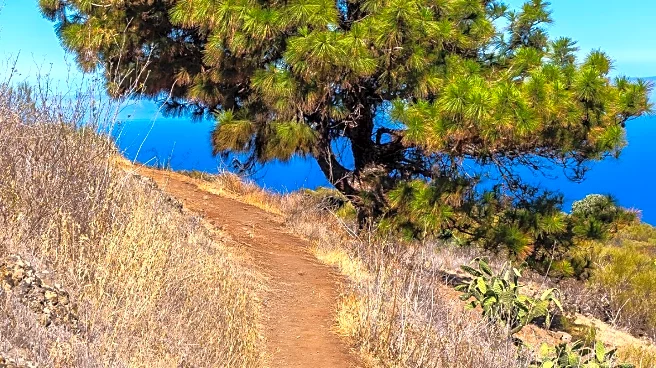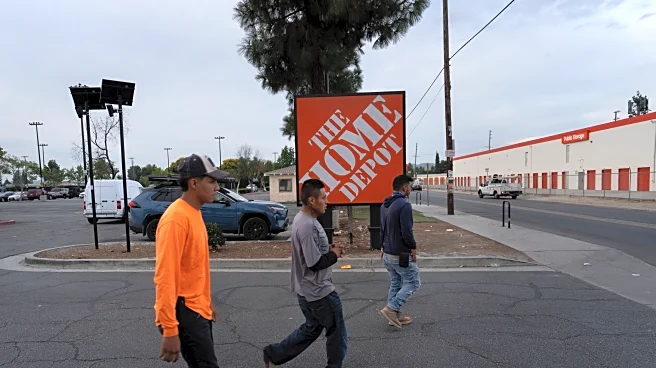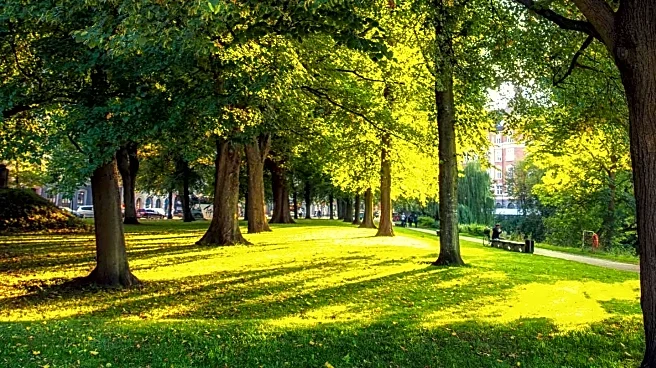What's Happening?
Los Angeles residents seeking relief from the city's heat can explore several hiking trails that offer cooler temperatures and scenic views. The Islip Saddle to Little Jimmy Trail Camp in Angeles National Forest provides a moderate 4.2-mile hike with elevation gains of about 850 feet, offering a respite from the urban environment. Despite the scars from the 2020 Bobcat fire, the area showcases nature's resilience with new growth among the burned trees. Other trails include the Colorado Lagoon path in Long Beach, a 1.4-mile accessible urban hike, and the Solstice Canyon Trail in Malibu, which offers ocean views and a lush landscape. These trails provide opportunities for outdoor enthusiasts to escape the heat and enjoy the natural beauty of Southern California.
Why It's Important?
The availability of hiking trails in Los Angeles is significant for residents looking to escape the heat and urban noise. These trails not only offer physical health benefits but also mental health advantages by providing a peaceful environment away from the city's hustle. The resilience of nature, as seen in the regrowth following the Bobcat fire, highlights the importance of conservation efforts and the need to protect natural habitats. Additionally, accessible trails like the Colorado Lagoon path ensure that people of all abilities can enjoy outdoor activities, promoting inclusivity in recreational spaces.
What's Next?
As autumn approaches, cooler temperatures will make hiking more comfortable, encouraging more residents to explore these trails. Conservation groups may continue efforts to restore areas affected by fires, ensuring the preservation of these natural spaces. Events like educational talks at the Colorado Lagoon will help raise awareness about local ecology and promote community involvement in conservation activities. The ongoing development of accessible trails will likely continue, enhancing opportunities for all individuals to engage with nature.
Beyond the Headlines
The focus on hiking and outdoor activities in Los Angeles reflects broader trends in urban areas where residents seek natural escapes from city life. This movement underscores the growing importance of urban planning that incorporates green spaces and accessible recreational areas. The resilience of ecosystems, as seen in the recovery from the Bobcat fire, serves as a reminder of the delicate balance between urban development and environmental conservation. As cities expand, maintaining this balance will be crucial for sustainable living.














